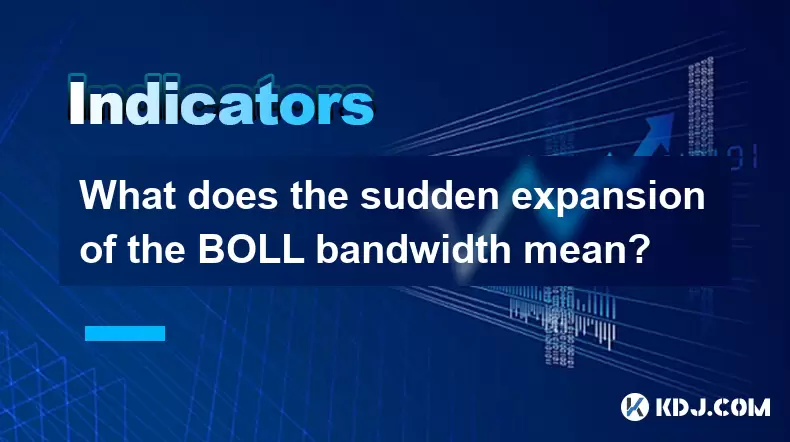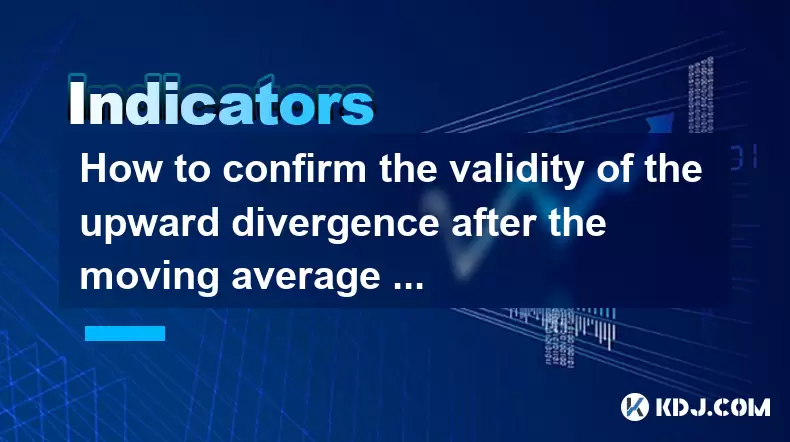-
 Bitcoin
Bitcoin $106,754.6083
1.33% -
 Ethereum
Ethereum $2,625.8249
3.80% -
 Tether USDt
Tether USDt $1.0001
-0.03% -
 XRP
XRP $2.1891
1.67% -
 BNB
BNB $654.5220
0.66% -
 Solana
Solana $156.9428
7.28% -
 USDC
USDC $0.9998
0.00% -
 Dogecoin
Dogecoin $0.1780
1.14% -
 TRON
TRON $0.2706
-0.16% -
 Cardano
Cardano $0.6470
2.77% -
 Hyperliquid
Hyperliquid $44.6467
10.24% -
 Sui
Sui $3.1128
3.86% -
 Bitcoin Cash
Bitcoin Cash $455.7646
3.00% -
 Chainlink
Chainlink $13.6858
4.08% -
 UNUS SED LEO
UNUS SED LEO $9.2682
0.21% -
 Avalanche
Avalanche $19.7433
3.79% -
 Stellar
Stellar $0.2616
1.64% -
 Toncoin
Toncoin $3.0222
2.19% -
 Shiba Inu
Shiba Inu $0.0...01220
1.49% -
 Hedera
Hedera $0.1580
2.75% -
 Litecoin
Litecoin $87.4964
2.29% -
 Polkadot
Polkadot $3.8958
3.05% -
 Ethena USDe
Ethena USDe $1.0000
-0.04% -
 Monero
Monero $317.2263
0.26% -
 Bitget Token
Bitget Token $4.5985
1.68% -
 Dai
Dai $0.9999
0.00% -
 Pepe
Pepe $0.0...01140
2.44% -
 Uniswap
Uniswap $7.6065
5.29% -
 Pi
Pi $0.6042
-2.00% -
 Aave
Aave $289.6343
6.02%
Must you sell when KDJ is overbought? 90% of people ignore this special situation!
The KDJ indicator helps identify overbought or oversold conditions in crypto trading, but overbought doesn't always mean sell — strong trends can sustain high KDJ levels.
Jun 11, 2025 at 05:42 pm

What Is KDJ and How Does It Work?
The KDJ indicator, also known as the stochastic oscillator, is a momentum-based technical analysis tool used to identify overbought or oversold conditions in financial markets. In the context of cryptocurrency trading, it helps traders determine potential reversal points by comparing a cryptocurrency's closing price relative to its price range over a specific period. The indicator consists of three lines: the K line, the D line, and the J line.
When the KDJ indicator reaches above 80, it signals an overbought condition, which many traders interpret as a sign that the asset may be due for a pullback. However, this interpretation can be misleading if not contextualized within broader market dynamics.
Why Overbought Doesn't Always Mean Sell
It’s crucial to understand that just because the KDJ indicator shows overbought levels, it doesn’t necessarily mean you should sell immediately. In strong uptrends, especially in highly volatile crypto assets like Bitcoin or Ethereum, the KDJ can remain in overbought territory for extended periods without any significant correction.
This phenomenon occurs because during powerful bull runs, buyers continue to dominate the market, pushing prices higher despite traditional indicators suggesting otherwise. Therefore, acting solely on the KDJ overbought signal without considering trend strength, volume, or other confirming indicators can lead to premature exits and missed gains.
Identifying the Special Situation: When to Hold Despite Overbought KDJ
There is a special situation often ignored by 90% of traders: when the price is making new highs but the KDJ does not confirm with higher highs, this divergence suggests weakening momentum and a possible reversal. However, if the KDJ continues to rise alongside the price, forming higher highs, it indicates strong buying pressure and sustained bullish momentum.
In such cases, selling based purely on the overbought reading would be counterproductive. Instead, traders should look for bearish divergence between price and the KDJ lines, particularly between the K and D lines crossing downward after reaching overbought levels. This combination provides a more reliable sell signal than simply reacting to the J line peaking above 100.
How to Use KDJ in Combination With Other Indicators
To avoid false signals, it’s essential to combine the KDJ with other tools such as moving averages, RSI (Relative Strength Index), and volume analysis. For instance:
- If the 50-day moving average is still rising and the volume remains strong, even with overbought KDJ, the trend may still have room to grow.
- Using RSI alongside KDJ can help filter out noise — if RSI hasn’t reached extreme levels while KDJ is overbought, the uptrend might still be healthy.
- Monitoring volume spikes when KDJ enters overbought territory can indicate whether institutional or whale activity is still supporting the rally.
These combinations provide a more nuanced understanding of market sentiment and reduce the risk of exiting too early based on a single indicator.
Practical Steps to Analyze KDJ Signals in Crypto Trading
If you’re planning to use KDJ in your crypto trading strategy, follow these detailed steps:
- Open your preferred trading platform and select the KDJ indicator under the oscillator category.
- Set the default parameters unless you're customizing them — typically, the settings are 9, 3, 3 for the KDJ calculation.
- Observe how the K and D lines move together — when they cross above 20, it indicates a bullish signal; when they cross below 80, it suggests bearish momentum.
- Watch for J line behavior — if it goes beyond 100 or below -20, it signals extreme conditions but not automatic trade signals.
- Look for crossovers in conjunction with candlestick patterns — for example, a bearish engulfing pattern forming as KDJ exits overbought territory strengthens the sell signal.
- Compare with support/resistance levels — if the price hits a key resistance and KDJ is overbought, it increases the likelihood of a pullback.
By following these steps carefully, traders can better assess whether a KDJ overbought level is a real warning or just part of a healthy bull phase.
Frequently Asked Questions
Q: Can I rely solely on KDJ for trading decisions?
A: No, relying only on KDJ can lead to false signals. Always combine it with other tools like volume, RSI, and moving averages for confirmation.
Q: What time frame works best for KDJ in crypto trading?
A: The daily chart is commonly used, but swing traders may prefer the 4-hour chart. Short-term traders might adjust the KDJ settings to suit faster-moving crypto markets.
Q: Should I always sell when KDJ hits overbought?
A: No, especially in strong uptrends, KDJ can stay overbought for long periods. Wait for bearish divergence or crossovers before considering a sell.
Q: How do I spot divergence using KDJ?
A: Look for discrepancies between price action and the KDJ lines — for example, if price makes a new high but KDJ fails to do so, it could signal a reversal.
Disclaimer:info@kdj.com
The information provided is not trading advice. kdj.com does not assume any responsibility for any investments made based on the information provided in this article. Cryptocurrencies are highly volatile and it is highly recommended that you invest with caution after thorough research!
If you believe that the content used on this website infringes your copyright, please contact us immediately (info@kdj.com) and we will delete it promptly.
- BONK, Ethereum, and AI Utility: A New Era?
- 2025-06-21 12:25:12
- Bitcoin Price Prediction: Will BTC Bounce Back or Break Down?
- 2025-06-21 12:25:12
- BONK Price Prediction: Will the Meme Coin Rebound?
- 2025-06-21 12:30:12
- Bitcoin's $100K-$110K Range: Short Interest Heats Up!
- 2025-06-21 12:45:12
- CoinMarketCap Under Fire: Wallet Scam Highlights Malicious Activity
- 2025-06-21 12:45:12
- Meme Coins, Crypto, and Explosions: What's Poppin' in 2025?
- 2025-06-21 13:05:11
Related knowledge

Does the sudden contraction of ATR indicate the end of the trend?
Jun 20,2025 at 11:14pm
Understanding ATR and Its Role in Technical AnalysisThe Average True Range (ATR) is a technical indicator used to measure market volatility. Developed by J. Welles Wilder, ATR calculates the average range of price movement over a specified period, typically 14 periods. It does not indicate direction—only volatility. Traders use ATR to gauge how much an ...

Is it invalid if the DMI crosses but the ADX does not expand?
Jun 21,2025 at 09:35am
Understanding the DMI and ADX RelationshipIn technical analysis, the Directional Movement Index (DMI) consists of two lines: +DI (Positive Directional Indicator) and -DI (Negative Directional Indicator). These indicators are used to determine the direction of a trend. When +DI crosses above -DI, it is often interpreted as a bullish signal, while the opp...

Is the trend continuation when the Williams indicator is oversold but there is no rebound?
Jun 20,2025 at 11:42pm
Understanding the Williams %R IndicatorThe Williams %R indicator, also known as the Williams Percent Range, is a momentum oscillator used in technical analysis to identify overbought and oversold levels in price movements. It typically ranges from 0 to -100, where values above -20 are considered overbought and values below -80 are considered oversold. T...

What does the sudden expansion of the BOLL bandwidth mean?
Jun 21,2025 at 01:49pm
Understanding the BOLL IndicatorThe BOLL (Bollinger Bands) indicator is a widely used technical analysis tool in cryptocurrency trading. It consists of three lines: a simple moving average (SMA) in the center, with upper and lower bands calculated based on standard deviations from that SMA. These bands dynamically adjust to price volatility. When trader...

Is the golden cross of the ROC indicator below the zero axis effective?
Jun 20,2025 at 09:42pm
Understanding the ROC Indicator and Its Role in Cryptocurrency TradingThe Rate of Change (ROC) indicator is a momentum oscillator widely used by traders to assess the speed at which cryptocurrency prices are changing. It measures the percentage difference between the current price and the price from a certain number of periods ago. The ROC helps identif...

How to confirm the validity of the upward divergence after the moving average sticks together?
Jun 21,2025 at 01:36am
Understanding the Basics of Moving Averages and DivergenceIn technical analysis, moving averages are crucial tools used to smooth out price data over a specified time period. When multiple moving averages converge or 'stick together,' it often indicates a consolidation phase in the market. This phenomenon can be a precursor to significant price movement...

Does the sudden contraction of ATR indicate the end of the trend?
Jun 20,2025 at 11:14pm
Understanding ATR and Its Role in Technical AnalysisThe Average True Range (ATR) is a technical indicator used to measure market volatility. Developed by J. Welles Wilder, ATR calculates the average range of price movement over a specified period, typically 14 periods. It does not indicate direction—only volatility. Traders use ATR to gauge how much an ...

Is it invalid if the DMI crosses but the ADX does not expand?
Jun 21,2025 at 09:35am
Understanding the DMI and ADX RelationshipIn technical analysis, the Directional Movement Index (DMI) consists of two lines: +DI (Positive Directional Indicator) and -DI (Negative Directional Indicator). These indicators are used to determine the direction of a trend. When +DI crosses above -DI, it is often interpreted as a bullish signal, while the opp...

Is the trend continuation when the Williams indicator is oversold but there is no rebound?
Jun 20,2025 at 11:42pm
Understanding the Williams %R IndicatorThe Williams %R indicator, also known as the Williams Percent Range, is a momentum oscillator used in technical analysis to identify overbought and oversold levels in price movements. It typically ranges from 0 to -100, where values above -20 are considered overbought and values below -80 are considered oversold. T...

What does the sudden expansion of the BOLL bandwidth mean?
Jun 21,2025 at 01:49pm
Understanding the BOLL IndicatorThe BOLL (Bollinger Bands) indicator is a widely used technical analysis tool in cryptocurrency trading. It consists of three lines: a simple moving average (SMA) in the center, with upper and lower bands calculated based on standard deviations from that SMA. These bands dynamically adjust to price volatility. When trader...

Is the golden cross of the ROC indicator below the zero axis effective?
Jun 20,2025 at 09:42pm
Understanding the ROC Indicator and Its Role in Cryptocurrency TradingThe Rate of Change (ROC) indicator is a momentum oscillator widely used by traders to assess the speed at which cryptocurrency prices are changing. It measures the percentage difference between the current price and the price from a certain number of periods ago. The ROC helps identif...

How to confirm the validity of the upward divergence after the moving average sticks together?
Jun 21,2025 at 01:36am
Understanding the Basics of Moving Averages and DivergenceIn technical analysis, moving averages are crucial tools used to smooth out price data over a specified time period. When multiple moving averages converge or 'stick together,' it often indicates a consolidation phase in the market. This phenomenon can be a precursor to significant price movement...
See all articles

























































































